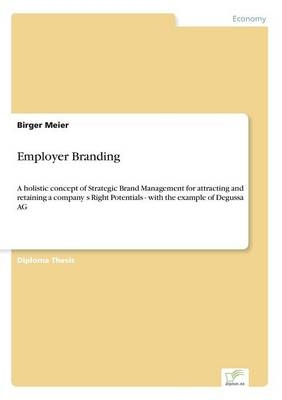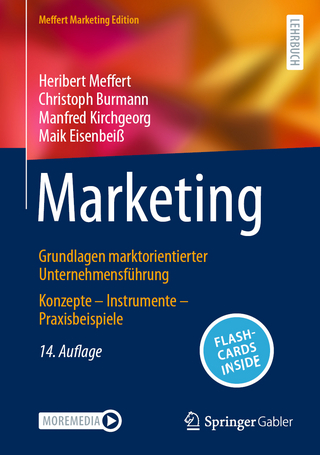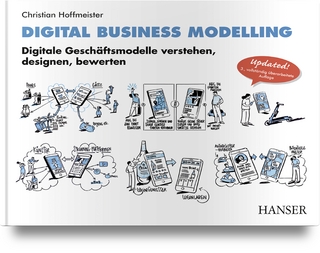
Employer Branding
A holistic concept of Strategic Brand Management for attracting and retaining a company¿s Right Potentials - with the example of Degussa AG
Seiten
2006
diplom.de (Verlag)
978-3-8386-9643-0 (ISBN)
diplom.de (Verlag)
978-3-8386-9643-0 (ISBN)
Diploma Thesis from the year 2006 in the subject Business economics - Marketing, Corporate Communication, CRM, Market Research, Social Media, grade: 2,3, University of Paderborn (Wirtschaftswissenschaften, Wirtschaftsenglisch), language: English, abstract: Inhaltsangabe:Abstract:
The information economy, the current demographical trends and other factors will produce a shortage of skilled labour. During the last decade, many labour markets had encountered a shortage of skilled labour. In fact, whole industries have had serious problems to fill vacancies. Many have forecast horror scenarios for the labour market, whereas others have created strategic concepts to cope with it.
The War for Talent and the Employer of Choice concept are leftovers of this period. Employee attraction and retention will continue to be an important issue for many companies in the beginning of the 21st century. The new up-coming competition for talent draws the attention on a new concept, in order to deal with the future challenge - employer branding. Employer branding has moved center stage in the last two years. The strategic relevance of employer branding is still underestimated or unknown.
Employer branding is neither a wonder cure nor a cure-all approach. This thesis and chapters provide an insight in the employer branding concept and its relevance. What does employer branding means, where does it stem from? It also contains a practical guide for developing and implementing an employer branding process, with a short case study of global chemical company.
Do you remember the scenario published in McKinsey s Quarterly in 1998? The War for Talent - this expression has become synonymous for the labour shortage of High Potentials. The economy was burning white-hot in the late 1990s and companies were scrambling to hire and retain the people they needed. With a boom, talent becomes scarcer because everybody is looking for talented people to fill vacancies. In the late 1990s the employer of choice concept became popular, when the war for talent was about to begin.
The term employer of choice is based on the unwritten promises and expectations that develop the basis of the employment relationship. The collapse of the dot.com industry, followed by a time of recession and downturns causing layoffs and job cuts, has created a surplus of labour. The predicted War for Talent for High Potentials has been postponed. Really?
The current economic landscape has changed dramatically, product lifecycles have grown shorter, products and services are substitutional, innovation is accelerating and customer loyalty is just a pie-in-the-sky. The economy is driven by ongoing changes, globalization, growing complexity and the changing nature of work. Companies have to sustain on different markets, which are influenced by dynamics, increasing competitive pressure.
For this reason, having a long-lasting competitive advantage becomes more and more vital to companies, in terms of innovation. Knowledge is becoming the strategic source of innovation, not the reliance on technology. Hodes CEO Alan Schwartz points it out: People - talented people - solve problems and make sense of things. Not technology. That is what drives the importance of having the right talent inside a company. Nevertheless, there are emerging social and demographic trends that can make the recruiting efforts of organizations even harder and might start a new war: for Right Potentials.
Every employer in Western economies are facing the same problems and questions:
- How can we attract and retain employees?
- What differentiates our company from our competitors?
- What kind of talent do we need?
- How do our target groups perceive us?
- What kind of benefits do we offer?
- What makes us a First Choice employer ?
- What drives employee engagement and employee satisfaction?
Al...
The information economy, the current demographical trends and other factors will produce a shortage of skilled labour. During the last decade, many labour markets had encountered a shortage of skilled labour. In fact, whole industries have had serious problems to fill vacancies. Many have forecast horror scenarios for the labour market, whereas others have created strategic concepts to cope with it.
The War for Talent and the Employer of Choice concept are leftovers of this period. Employee attraction and retention will continue to be an important issue for many companies in the beginning of the 21st century. The new up-coming competition for talent draws the attention on a new concept, in order to deal with the future challenge - employer branding. Employer branding has moved center stage in the last two years. The strategic relevance of employer branding is still underestimated or unknown.
Employer branding is neither a wonder cure nor a cure-all approach. This thesis and chapters provide an insight in the employer branding concept and its relevance. What does employer branding means, where does it stem from? It also contains a practical guide for developing and implementing an employer branding process, with a short case study of global chemical company.
Do you remember the scenario published in McKinsey s Quarterly in 1998? The War for Talent - this expression has become synonymous for the labour shortage of High Potentials. The economy was burning white-hot in the late 1990s and companies were scrambling to hire and retain the people they needed. With a boom, talent becomes scarcer because everybody is looking for talented people to fill vacancies. In the late 1990s the employer of choice concept became popular, when the war for talent was about to begin.
The term employer of choice is based on the unwritten promises and expectations that develop the basis of the employment relationship. The collapse of the dot.com industry, followed by a time of recession and downturns causing layoffs and job cuts, has created a surplus of labour. The predicted War for Talent for High Potentials has been postponed. Really?
The current economic landscape has changed dramatically, product lifecycles have grown shorter, products and services are substitutional, innovation is accelerating and customer loyalty is just a pie-in-the-sky. The economy is driven by ongoing changes, globalization, growing complexity and the changing nature of work. Companies have to sustain on different markets, which are influenced by dynamics, increasing competitive pressure.
For this reason, having a long-lasting competitive advantage becomes more and more vital to companies, in terms of innovation. Knowledge is becoming the strategic source of innovation, not the reliance on technology. Hodes CEO Alan Schwartz points it out: People - talented people - solve problems and make sense of things. Not technology. That is what drives the importance of having the right talent inside a company. Nevertheless, there are emerging social and demographic trends that can make the recruiting efforts of organizations even harder and might start a new war: for Right Potentials.
Every employer in Western economies are facing the same problems and questions:
- How can we attract and retain employees?
- What differentiates our company from our competitors?
- What kind of talent do we need?
- How do our target groups perceive us?
- What kind of benefits do we offer?
- What makes us a First Choice employer ?
- What drives employee engagement and employee satisfaction?
Al...
| Sprache | englisch |
|---|---|
| Maße | 148 x 210 mm |
| Gewicht | 128 g |
| Themenwelt | Wirtschaft ► Betriebswirtschaft / Management ► Marketing / Vertrieb |
| ISBN-10 | 3-8386-9643-3 / 3838696433 |
| ISBN-13 | 978-3-8386-9643-0 / 9783838696430 |
| Zustand | Neuware |
| Haben Sie eine Frage zum Produkt? |
Mehr entdecken
aus dem Bereich
aus dem Bereich
Grundlagen für Studium und Praxis
Buch | Softcover (2022)
Springer Gabler (Verlag)
29,99 €
Grundlagen marktorientierter Unternehmensführung : Konzepte, …
Buch | Hardcover (2024)
Springer Gabler (Verlag)
49,99 €
Digitale Geschäftsmodelle verstehen, designen, bewerten
Buch | Hardcover (2022)
Hanser (Verlag)
39,99 €


